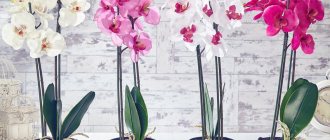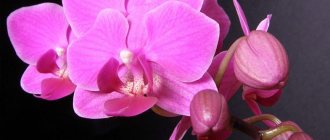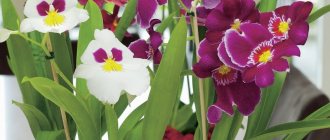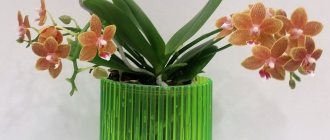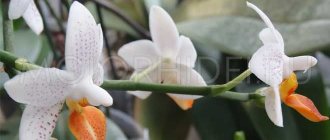Shelves for flowers: species diversity
A plan for the arrangement of plants in the room will help you decide what shapes and proportions to make a flower stand.
Basically, in order to save space, they try to raise them on the walls or use hanging shelves for flowers, but this is not always possible. There are plants so large that they can be placed exclusively on the floor.
This allows products to be classified as:
- wall;
- floor;
- hanging.
Further, the designs may vary in shape. They can be done:
- straight;
- curly;
- corner;
- multi-level.
- Shelves for flowers and their capacity will be divided into subtypes.
- Single, double and multi-seat models are conventionally distinguished here.
The first ones are good for wall mounting. Liana-like plants and small bushy, densely flowering greens look great on them.
- Plants with identical conditions, most often of the tree family, are placed on double shelves
- Multi-seat models are universal. You can see such shelves for flowers on the wall, on the window, on the floor. It is advisable not to place overly heavy pots on wall-mounted models. They may not withstand the load and fall out with a piece of the wall. But the one made with your own hands for flowers is initially designed to carry serious weight.
So if you build a greenhouse with large plants, then only on it.
Any of the designs considered can be assembled in a corner format. In this way, space will be saved and design talent will be demonstrated.
Fans of climbing plants may like the photo ideas for hanging shelves for flowers with ceiling mounts.
The classification is clear. What are flower stands made of? They can be assembled from any materials of sufficient strength. There is glass, plastic, and plywood. But still, for many, wood remains the priority of choice. Let's look at the most interesting solutions.
General selection rules
A successful orchid stand meets several requirements :
- The dimensions of the stand should ensure comfortable placement of orchids;
- It is necessary to provide for the possibility of free and sufficient access to light and air for plants;
- You need to think about the moisture resistance of all materials, because high humidity is important for epiphytes.
Wall mounted flower shelf made of plywood
It’s probably impossible to find a simpler and cheaper material for making wall structures. It is easy to cut out shapes from plywood, and of any size. And you don’t need any special skills to work with it.
So where do you start creating a flower shelf with your own hands?
Are you thinking about tool preparation? Not at all.
The creative process will begin with the creation of a sketch. And here, on paper, you can pour out all your fantasies. Then there will be plenty to choose from. You can pore over the design of a future masterpiece for a long time, carefully working out all the details, but when you get carried away by aesthetics, it is important not to forget about the main purpose of the product. Wall shelves for flowers must be durable and withstand the expected load.
The next step will be to create a design drawing, indicating the dimensions and type of fasteners. We will transfer it to a plywood sheet.
It is most convenient to cut out the workpiece with an electric jigsaw. The cut lines of the finished canvas are cleaned. This can be done carefully with sandpaper. We treat the plywood with a protective impregnation to increase its moisture resistance and leave it to dry.
The finishing touch to working on a wall shelf for flowers will be to open it with varnish. If desired, the product can be decorated. How?
- Cover with beautiful self-adhesive film.
- Paint with paints.
- Decorate with rhinestones, beads, buttons, shells, etc.
- In general, show creative thought.
They try to fix the structure to the wall using metal corners and brackets.
The window shelf for flowers will be assembled using the same principle. It is fixed on the slopes of the window opening. Cascades of such small products look interesting.
From thick plywood it will be quite possible to assemble a stand for tall plants in large pots standing on the floor. But when working with your own hands on a floor shelf for flowers, you will need to think not about fasteners, but about the legs.
Ordinary pieces of timber, sawn into neat cubes, are suitable for their role.
For such a stand, stability will be very important, so it is better not to experiment and leave the structure with all 4 legs, although their number may vary depending on the shape of the structure. For example, a round, large-diameter shelf can have 8 of them, and the legs are unusually cut - in the shape of hockey pucks.
Stands for miniature orchids
Another option for vertical lateral placement of orchids on a window is on poles. There are various vertical stands on sale with shelves or rings attached to them into which pots are inserted. But a homemade pole made from a wooden rod with a cross-section of 40 mm and hemp or jute rope will look more unusual:
- a square platform for installing a pole is assembled from two small pieces of thick board;
- the wooden rod is cut to an acceptable height;
- jute or hemp twine is wound around the rod along its entire height in several layers, secured with waterproof polymer glue;
- using self-tapping screws, the rod is installed vertically on the platform;
- pots of orchids are hung on a pole using wire hooks.
Unfortunately, this design is also unstable, so hanging pots of heavy, tall orchids on a pole is dangerous. However, for light miniature orchids (mini-phalaenopsis, Erycina pusilla, zygostates, etc.) this placement option will be more than acceptable.
If you hang the pots from a pole not vertically, but slightly at an angle, you can place a fairly large number of plants on it - up to 10-12 specimens, depending on the diameter of the pot and the volume of the leaf mass. In this case, none of the orchids will be deprived of light.
DIY plastic shelf for flowers on the windowsill
It sounds like a pun, but a shelf for flowers on the windowsill is made from... a window sill. It can be found in finished form in hardware stores or purchased from plastic window manufacturers. In addition to the plastic sheet, you will need:
- nickel-plated pipes;
- flanges;
- brackets;
- work tool.
- The window sill is cut to length into three pieces of identical size.
- Next, three holes are made in each blank into which the rack pipes will be inserted.
- They are placed according to the following pattern: 2 holes at the edges of the back line and 1 in the middle of the front line. The result should be a support triangle.
- The next step in making your own flower shelf is to cut the pipes.
- The three parts are given the same length. We assemble the structure and fix the elements with flanges and screws. For greater reliability, the two rear pipes are attached to the wall with brackets.
Plastic shelf options are very practical. They are not difficult to care for, plus they are not afraid of water, which is very important in the case of flowers.
Chain pendants for placing orchids on the windowsill
The most compact way to place a large number of orchid pots is in long vertical hangings on the sides of the window. You can make such a suspension using thin metal chains, hooks and wire:
- Strong metal hooks are installed into the window covering on both sides;
- 6 pieces of chain are measured, the length corresponding to the height of the window;
- Three chains are put on each hook;
- pots with orchids are secured between three chains with wire rings.
These hangers allow you to increase the number of orchids placed on the window by eight specimens - four on each side.
“I liked the idea with chains because I could do almost everything myself. My son only helped me put in the hooks. I was worried that during flowering the pots would twist the chains and turn over - the flower stalks can be heavy. But no, the wire rings hold the pots well. The main thing is that these rings are tightly tightened” (Svetlana, Vladikavkaz).
Chain hangers can also be attached to a horizontal rod. Then several more hanging flower pots with flowers can fit between them.
Glass shelves
Working with glass is a rather complex process that requires some skills. If you do not have them, then it is advisable to contact special workshops.
Remember that the work requires glass with good thickness. It shouldn't break if something goes wrong.
To work you will need:
- glass cutting tool;
- hacksaw;
- large glass that is divided into 6 parts;
- 8 iron corners;
- 2 wooden planks.
Progress:
- Cut the large glass into 6 small pieces.
- In the slats we cut a groove 0.5 deep from the width of the future rack.
- We place the boards on the corners, which are attached to the wall from the bottom and top.
- We insert the ready-made rack into the grooves.
Corner shelves for flowers
To create a corner shelf, you can use all the materials listed here. For small products there will be enough leftover materials.
The technology for creating corner shelves with your own hands is very simple.
- A surface of the required size is cut from a sheet of chipboard. A galvanized pipe is threaded into the prepared holes and the entire invention is connected to each other with flanges. Using brackets it is fixed to the selected surface.
- The next stage is treatment with varnish or paint.
- To create a green corner, an interesting solution would be a kind of corner shelving. As they grow, the shelves become smaller, representing a pyramid. On this design you can arrange flowers of different sizes using climbing plants on the sides.
Stands
Among the most popular varieties are floor stands and special structures for window sills. Desktop designs are less common. You can see a photo of one of the stands below.
You can create a variety of stands for orchids.
The right floor stands and those that are installed on the windowsill are light and mobile , accommodating several specimens of whimsical tropics.
Important! Floor ones have the form of stairs, whatnots, shelves. For window sills, lightweight structures made of metal profiles with wire hanging baskets are usually selected.
Do it yourself from wood
It’s easy for a craftsman to make with his own hands both a pot and a unique and convenient wooden stand on which the gardener will grow his orchids. Popular options :
- Using natural materials with minimal processing;
- Decorating household items - stairs, drawers;
- Manufacturing of special structures from bars and planks.
Natural materials
Select one piece of a tree trunk (stump, log) with several thick branches directed in different directions, cut it to get horizontal ones.
Be sure to install it on a base with an area at least 50% larger than the diameter of the main trunk - to provide stability.
Sand, treat with an antiseptic solution , and prime. A tray for a pot with a plant is attached to each horizontal line. Then they are varnished or painted, giving the product the desired style and appearance.
From an old staircase
A low wooden stepladder can make an original and convenient stand for orchids, the main thing is that the distance between the tiers allows you to comfortably place the existing specimens.
For this, old surfaces :
- Sanded;
- Clean from dust;
- Primed.
If the stairs are not very stable or have narrow steps, you can install additional shelves by securing them on opposite steps of the same level.
Vegetable boxes mounted on a base and assembled in the form of a bookcase are also suitable. Their plus is excellent ventilation.
Sometimes ladders are used for stands.
Finishing:
- Painting with moisture-resistant paint;
- Varnish coating;
- Decorating with jute twine;
- Tree bark;
- Moss.
Manufacturing technology
This can be a habitat for one orchid - a basket, or a habitat for an entire collection - in the form of a rack .
The internal size of the basket is slightly larger than the pot that they plan to place.
Attention! The length of the bars for the side walls should be 7–10 cm greater than the diameter of the pot. The height of the leg bars is 5–7 cm greater than the height of the container.
4 square bars and 12 rectangular bars are required. Their size depends on the size of the stand and should be in harmony with the dimensions of the pot. All elements are fastened using:
- Self-tapping screws;
- And PVA glue.
The dimensions of the shelf or whatnot are selected individually . It is recommended to make mobile structures that are not too large. Each orchid requires free space up to 80 cm in height; free (with reserve) placement of flower pots is provided.
For the side shelf you will need :
- 2 long bars 50 mm x 50 mm (the specific length depends on the expected number and size of plants);
- For each container, a short (according to the width of the structure) block of 40 mm x 40 mm plus one more is fixed at the base of the structure;
- 2 fixing hooks for each pot;
- Self-tapping screws.
One end of the long bars is sawed at an angle of 450 ; these will be the legs of the whatnot. The first transverse bar is secured with self-tapping screws at a distance of 15-20 from the bottom.
The following crossbars are attached at a distance necessary for the free placement of containers ; the flower pots will rest on them, and their upper part must be secured with hooks attached to the side bars.
To make a mobile shelf you need to prepare :
- Wooden blocks and tenons;
- Plywood sheet;
- Wheels for furniture;
- Self-tapping screws;
- Jigsaw, screwdriver, drill, brushes.
Mobile stands for orchids are often made.
The final height of a two-tier structure can be 1 m, a shelf with 3 shelves can be 1.75 m. The width depends on the number of plants in the collection, but to maintain mobility, you should not make it wider than 1–1.5 m.
First, the shelves are cut out from plywood . Then 2 frames are assembled from bars. Inside each, at the height of the proposed shelves, additional support bars are attached, and the frames are fastened together with the same elements.
, two long transverse (to ensure stability) bars are installed . After finishing the decorative finishing of the frame, pre-prepared and painted shelves are placed on it, and furniture wheels are attached to the legs.
Finishing of all wood products includes :
- Grinding and cleaning of surfaces;
- Impregnation with an antiseptic composition;
- Primer;
- Painting or coating with decorative varnish.
Wooden flower shelves
Wood is one of the most reliable materials used in construction.
Properly assembled and secured wooden racks or shelves can accommodate any number of plants, regardless of size. When choosing wooden wall shelves, you can limit yourself to the simplest option. To do this, take a beam of the required length, coat it with varnish or paint and attach it to the wall using metal corners.
If you replace the fastenings with leather straps, you get a creative design approach that brings individuality.
- Wooden floor racks are made for plants in large flowerpots. They can withstand a lot of weight, allowing you to combine different types of colors.
- A corner shelf can be easily assembled from scraps, even if they are of unequal length. Flowering bushes diversify the boring life of corners with their bright colors.
- For those who like unusual options, we offer wooden shelves that combine several different materials.
- The method of assembling wooden shelves or racks is the same as in the version with plywood.
Wall flower shelf made of wood and metal
When combining materials for flower shelves, we recommend choosing a combination of metal and wood. A welded metal frame with wooden flooring is used for wall-mounted shelves and fits very harmoniously into a modern interior.
For manufacturing, you will need a drawing with measurements, several rods that will later create the base of the shelf, and a wooden board for the partition.
After welding the main part, it must be treated with an anti-corrosion solution and painted in the chosen color. Next, the prepared wooden plank is installed, the finished product is attached to the wall using self-tapping screws.
Considering this combination of materials in floor options for flower racks, the main work is carried out according to the same plan. Preference is given to options with several tiers, and lovers of sophistication will appreciate forged flower stands.
Rack stands for placing orchids on the windowsill
The first type of stands that help place a larger number of plants on the windowsill is shelving. They represent a vertical system of shelves connected by a common frame.
Having the necessary materials at hand, you can easily build such a bookcase with your own hands:
| Materials and tools | Construction stages |
| · planed wooden blocks 30 mm wide and 20 mm thick; · roulette; · hacksaw; · screwdriver; · self-tapping screws. |
|
This is the simplest version of the rack, which does not require large material investments and particularly complex work. By painting such a shelf in your favorite color or varnishing it, you can make the structure more durable.
Important! Shelving stands have a serious drawback - insufficient stability. Legs can slide off the windowsill, and the shelves themselves can lose balance when pots of orchids are removed from them. This must be taken into account when installing the rack.
If you have the skill, you can weld a metal rack for orchids. When determining the height of the shelves, you need to keep in mind the height of the plants. If orchids are tied when flowering, then you need to include the height of the peduncle in the calculations, or abandon the garter.
Shelves for flowers from furniture panels and bars
Scraps of glued furniture panels can be found in furniture workshops and bought for pennies. After all, shelves require very small pieces that are difficult to find other uses for.
But you can also buy a sheet of the appropriate size.
This material is practically no different in appearance and characteristics from solid wood, it is just as easy to process and also requires a protective finish to increase resistance to moisture. The proximity to which is inevitable when placing living plants on shelves.
Step 1. Decide on the number and shape of the shelves, draw their outlines with a pencil on the furniture panel.
Step 2. From the wrong side we cover the outline with adhesive tape or adhesive tape to prevent chips from breaking off during cutting.
Step 3. Cut out the parts with a jigsaw.
Step 4. We secure the workpieces on the table with clamps and process their edges with a milling machine, rounding them or giving them a shaped shape.
Step 5. Remove all irregularities and minor defects by sanding. To avoid abrasive scratches on the surface, sanding should be done along the grain of the wood fibers.
Step 6. We also process the bars for the legs with a milling cutter, rounding the corners, and grind them until a smooth surface is obtained without scoring or burrs. If there is a desire and opportunity, they can be given a curly shape. If not, normal processing is sufficient.
Also, instead of bars, you can use ready-made balusters for stairs and railings.
Step 7. Turn the bottom shelf over, evenly space the legs on it and trace each one at the base with a pencil. Then in the center of the drawn square we drill a hole with a thin drill so that we can see where to screw in the self-tapping screw from the front side.
Step 8. Coat the ends of the legs with glue, set them in place according to the marks and fasten them with self-tapping screws using a screwdriver or screwdriver.
Step 9. Decide on the position and height of the second shelf. It moves relative to the bottom to the side, so you will need two legs of different lengths: one to the floor and the second to the plane of the bottom shelf. We calculate these dimensions, saw off the bars of the required length and fasten them according to the already known pattern.
Step 10. We attach the third tier, one of the legs of which rests on the bottom shelf, and the other on the second.
Step 11. We cover the finished structure with paint or varnish or impregnate it with a protective impregnation in two or three layers.
Wall shelf
A small hanging shelf can be made from any sheet material or wide board. Let's consider manufacturing from laminated chipboard, as the most difficult material to process.
The structure will consist of the following parts:
- a base that will be adjacent to the wall;
- the actual shelves, the number of which can be any;
- supports for shelves in the form of right triangles with a straight or figured hypotenuse.
First, as with any other model, a product diagram is drawn up to determine the dimensions and amount of material.
- Then all the elements are cut out from the laminated chipboard using a jigsaw. Markings are made on the base for attaching shelves and supports to it. Holes for self-tapping screws are drilled along the marking lines. The parts are first glued to the base with universal glue, and then screwed into the ends on the back side of the base.
- After the glue has set, the ends of the chipboard and the joints are puttied with wood putty. This is an excellent alternative to edges that are difficult to apply to curved cuts, especially if they are not made very carefully. All unevenness can be easily eliminated with putty.
- When the putty has dried, all surfaces are sanded with fine sandpaper or sanding mesh and painted in the chosen color.
This is how, without much effort and professional skills in making furniture, you can literally make a useful and beautiful thing for your home in just a few hours. Having made it exactly what is needed in terms of functionality and decorative design.
Floor shelf with drawers
Such models are quite rare, but they look amazing. The step-by-step manufacturing instructions are almost the same as in the previous case, with the exception of some nuances:
- the area of storage space for pots can be variable;
- it is not necessary to adhere to a specific structure: they can “look” in different directions;
- Such shelves will be supported on a vertical base made of wood or metal;
- they can be attached to it using bolts, as in the general case;
- The most difficult thing will be to make the boxes, but it is quite possible: just prepare rectangular or square elements, and then knock them together, giving the shape of a cube/parallelepiped (depending on the desired shape of the finished structures);
- Of course, it will be necessary to provide legs or wheels; as already noted, it is best to purchase them ready-made.
The procedure is similar , only instead of holes for the rope, recesses are made for installing legs if the shelf is classic, and a special base if it is “standing”.
Holders
The holder is needed to support long, heavy peduncles. Usually these are sticks:
- Wooden;
- Or plastic;
- Pointed at one end;
- Fantasy from another.
Many gardeners use orchid holders.
The pointed part is placed among the roots and secured with a substrate . Wooden products are not aesthetically pleasing. But the plastic ones are crowned with graceful curls in the form of:
- Butterflies;
- Hearts;
- Lepestkov.
They harmonize perfectly with delicate flowers. They are produced by companies operating in the floristic industry market. The cost of accessories is low, in different regions - in the range of 40–100 rubles per piece .
IMPORTANT! You can purchase it in specialized flower shops or specialized departments of shopping centers.
How to use?
How to properly tie an orchid to a holder? In order not to harm the plant, you need to properly attach the peduncle to the support .
When is it necessary to secure the peduncle?
The peduncle must be secured to the holder if there is a danger of the pot overturning as the flower cluster grows.
Orchids are tied to a holder to prevent the pot from tipping over.
The brush should also be lifted and tied if the plants begin to interfere with each other.
What can I tie it with?
Strictly speaking, a garter is any method of attaching a peduncle to a holder. For this use :
- Special plastic clips or “crabs”;
- Synthetic thread;
- Thin wire in soft insulation.
Technology
Orchid gartering is carried out gradually and very carefully:
- The flower stalks are strong, though;
- But fragile;
- Easily break.
It is better to take care of installing the support at the same time as replanting the plant , at this moment there is the least chance of damage to the roots by a foreign object.
The gartering process begins when the peduncle grows to 10 cm . The stem is carefully pulled towards the holder, and not necessarily right away. As the peduncle grows, the garter is continued, the fastenings are placed just below the flower buds.
In what cases can it be done?
Orchid peduncles are endowed with sufficient strength to hold a large number of large, heavy flowers. In nature, many inflorescences hang below the level of the roots. At home, you can also do without a garter if the orchids :
- Firmly secured in hanging baskets;
- On wall blocks;
- Tightly standing pots.
Which material is better to choose
There are several types of raw materials for constructing shelves:
- metal;
- plastic;
- tree;
- glass;
- combined material.
Metal structures are very durable and can withstand a lot of weight. This configuration looks expensive and solid. But it requires special care and special treatment, otherwise corrosion may occur and the flower shelves will deteriorate.
It is almost impossible to build a plastic cabinet yourself.
It can be ordered in stores or online. They are unpretentious and very easy to use. Sections can be chosen in any shade. Since plastic is very flexible, crafts made from it can have different shapes and sizes. They are easy to wash and move as they are lightweight.
Wooden crafts are very popular. But the furniture is not convenient to use. When watering plants, water often gets on the surface of the stand or board, which can rot and swell.
If you decide to build a shelf out of wood, it must be carefully processed and the surface well coated with a special varnish.
Glass structures have a simple, elegant appearance, but to build it you need to have experience working with glass. They need special care. And you can’t put a lot of weight on such stands. They are good if you need to place one or two pots.
Combination sections include several components. Usually it is wood with metal or glass with metal. The crafts have an unusual appearance. They can withstand a lot of weight due to the combination of materials, and are not very fussy about cleaning.
Current questions about placing orchids on the windowsill
Question No. 1. What is the best way to place orchids on stands on window sills - higher or lower?
In terms of temperature, it is necessary to focus on the type of orchid. Plants that need warmth for good growth and flowering are best raised higher. Cold kept orchids can be left in the lower tier. But this applies more to summer time. In winter, if the window sill is located above the heating radiator, the situation can be completely opposite. Therefore, you will need to measure the air temperature at the top and bottom and, if necessary, swap the plants.
The benefits of creating a masterpiece yourself
The main advantage is that such work costs significantly less than buying a flower rack in a store.
To make furniture you will need a little patience, raw materials from which the craft will be made and tools.
The range of store stands is very small. Not all purchased ones are of good quality. Most often, in stores and on the Internet, there are the same type of cabinets that are found in every home. Some sections will not fit your interior or room dimensions.
When making a craft with your own hands, you have the opportunity to independently choose the size, shade, design and location of the structure. New universal furniture will only be in your home.
When creating outdoor furniture for plants, it is possible to take into account the nuances of its placement.
Build it so that the flower rack is out of the way and does not have to be walked around. You can create a sliding or moving structure that can be moved to the desired location at any time.
To make a stand, you don't have to buy something from the store. You can build a stand from an old garage cabinet or an unnecessary ladder.
Necessary materials
To make a classic shelf you will need:
- board made of wood, chipboard, MDF, plastic or metal;
- plywood;
- screws;
- plugs;
- additional tools;
- paint for decoration;
- varnish (when working with boards).
Additional tools can also be used to decorate the structure. If the furniture is floor-standing, you may need legs or wheels to secure the cabinet to the floor.
Required Tools
To assemble the configuration you will need the following tools:
- screwdriver;
- building level;
- electric drill;
- saw;
- pencil for marking;
- hammer;
- screwdriver;
- roulette;
- ruler.
The choice of fasteners will depend on the raw materials of the future configuration. The heavier the raw material, the more powerful the fastening is needed. If you plan to install a wall-mounted flower rack made of metal, then you must use a welding machine for fastening.
Otherwise, there is a chance that the stand will fall soon.
The final stage is decoration
When creating a rack, you can come up with your own product design. By choosing the right materials and spending a little time, you will get a unique masterpiece!
- For example, a plastic product comes in different palettes. To make the design original, you can attach decorative handrails to it.
- The wooden shelf is coated with glitter varnish. This gives shine and shine to the product.
- Glass shelves are often decorated with patterned metal elements.
In addition, for a craft to become beautiful, it is not necessary to paint it or attach anything to it. It’s enough just to place pots and beautiful pebbles, toys, and shells on it. Furniture can also be decorated with various fakes and toys.
Don't be afraid to experiment! Create new masterpieces and improve your skills! A rack for indoor flowers is just the beginning. Nothing decorates your home like handmade items.


